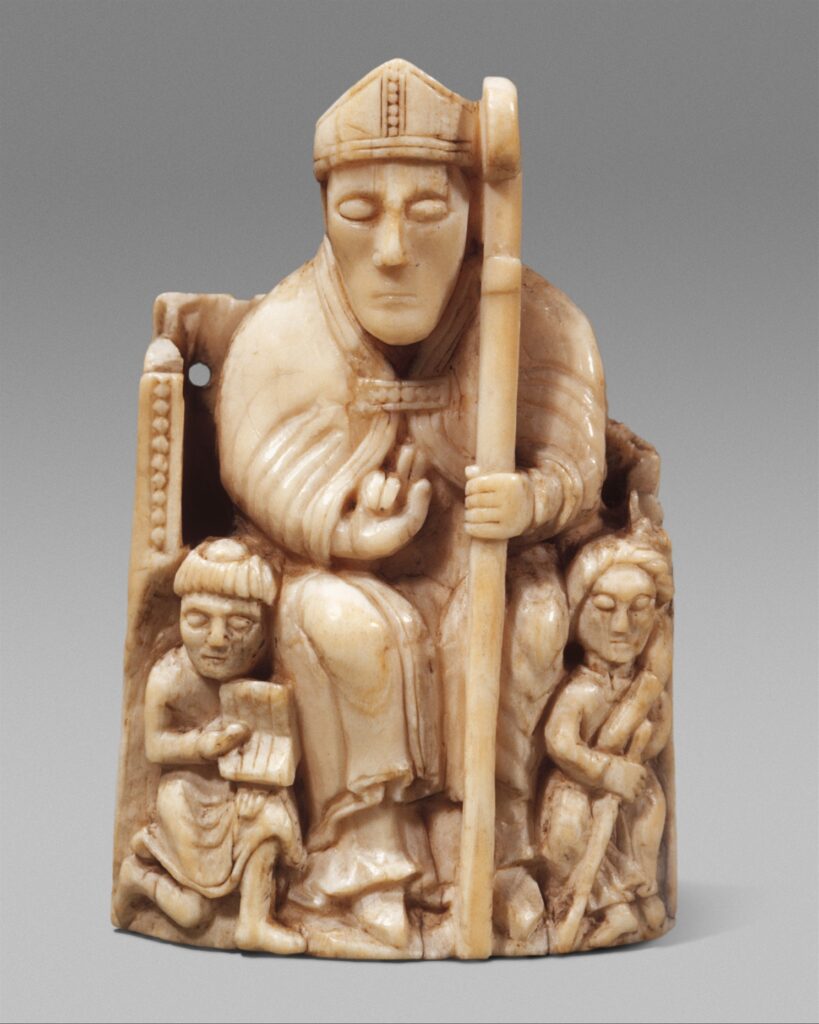Feast Day of St. Ansgar: Feb. 3
How valuable is a single soul? According to legend, you could sell yours to the Devil for power and women like Dr. Faust or rockin’ guitar skills like legendary blues musician Robert Johnson. Of course, they’re just stories and most such stories make the same point—anything you can dream up as the price of your soul dramatically undersells yourself. I’d like to reflect a little on the worth of your soul today with the story of St. Ansgar, the Apostle of the Swedes, Danes, and Vikings. (Part 1 of a two-part reflection).

My Nephew’s Baptism
I’m pondering the question in part because of a miracle I witnessed last Saturday. I saw my nephew get adopted by God as his beloved child. If you want to be technical, all I literally “saw” was his head doused with water and then oil. He was a trooper during the whole thing, smiling above his little toddler bow tie and only going off script when he said, “Mommy’s turn?” The rest of it could only be seen with faith.
When a group brought Jesus their paralyzed friend to be healed, the miracle that Jesus performed in response to their faith consisted in just the words, “Child, your sins are forgiven” (Mk 2:5). I can’t say if that’s what they wanted to hear, but the crowd wasn’t happy with his response. They doubted his words and missed the main miracle. So Jesus basically said, “Fine, I’ll show you and do some little thing that you can see more easily.” That’s when he physically healed the man. That amazed the crowd, but really it was practically an afterthought.
We can’t see the world the way that God does. It’s easy for us to focus on the immediate or visible signs of success or frustration. It’s hard to remember that, in the long term, almost everything ends. Your wealth, your own life, your country, and eventually Earth itself all will come to an end. A soul lasts forever. Literally. Moments like baptism remind us of that because they are about eternity.
What would our lives look like if we lived based on God’s eternal perspective?
Ansgar: The Saint of the Northern Missions
Ansgar (also spelled Anskar) lost his mother when he was only five. He started acting out, causing problems for his father and for his school. Then he had his first vision. He saw his mother with a crowd of other women led by the most beautiful lady he had ever seen. The lady—Mary—asked if he wanted to join his mother. When Ansgar said he did, Mary smiled and told him to focus on heavenly things and he would.

Young Ansgar joined the monastery at Corbie in France in the early 800s and rapidly impressed his new brothers. While teaching there, he had a second vision. Guided by Peter and Paul, he passed through Purgatory (feeling deep but temporary pain) and emerged into Heaven and its wonderful, joyous crowd of saints. Ansgar’s eyes didn’t have the strength to peer directly at the light of God’s glory, but he felt the tremendous love emanating from the Lord that protected all the saints, met all their needs, and sustained them from above and below.
Ansgar would continue to have visions throughout his life and the eyes of his soul kept focus on eternity. When a call came for someone to risk their lives preaching in Denmark—one of the homelands of the growing Viking threat—Ansgar and a friend volunteered. If the dangers meant he might only have twenty-odd years on life instead of sixty, then it was worth it if he could only give someone else hope of eternity.
Ansgar did everything. He preached to both Swedes and Danes, starting the missions there. He coordinated missions across the Baltic. He was given a new archbishop’s seat (Hamburg) in newly conquered Saxony as a base and had to organize it, try to connect with the local people (despite their resentments at what others had done), train missionaries, and find money to support all of that without burdening new converts. Not content with that, he also served as a teacher, worked with his hands making nets, ransomed slaves to give them freedom, founded a hospital for the poor, and then had to do it all again after Viking raiders burnt his new foundations to the ground.
I like Ansgar a lot. He is actually the saint whose story launched me on my dissertation topic of Christianization and charity. I don’t understand why there aren’t more kids named Ansgar. (My wife says it’s maybe an acceptable name for a dog.) There are, however, limits what he did.

Success or Failure?
There was never enough priests or money. Local Swedish and Danish leaders could remove missionaries on a whim—and did. We know many of the details of Ansgar’s life and his visions because of Rimbert, his close friend, coworker, and later successor and saint in his own right. Rimbert wrote about his friend in part as a plea that Christian countries would send more help, especially when Vikings burned down Hamburg… again. In the end, those other kingdoms didn’t do much. Christianity would not plant firm roots in Denmark or Sweden for another two centuries.
So did Ansgar and his companions fail? Yes and no. There is an interesting section right in the middle of Rimbert’s biography of Ansgar where the main character simply disappears for several chapters. I don’t think Ansgar would have minded—he clearly had both humility and a gift for collaboration that made him happy to let others shine. Those chapters focus instead on two Swedish converts after one of those episodes when the local authorities had driven away the missionaries and burned down their church.
One Swede was a leading citizen of the town, a man that others respected until he refused to renounce Christianity like the rest. The second convert was a quiet, elderly widow nearing death. She desperately wanted to be able to receive the last sacraments before she died, but there was no priest left. She set aside a little wine and made her daughter promise to let her sip it on her deathbed to make at least a kind of spiritual communion.

Then, after seven years, Ansgar found a hermit-priest willing to try ministering again to that Swedish community. The priest lasted only a few years, leaving when the friendly town leader died. Yet Rimbert didn’t lament this as a failure. Rather he praised God and marveled at the providence that led that priest there. Why? During that window of time, the widow passed away with the comfort of the sacraments and the priest by her side. The influential citizen found the strength to not only continue in his faith but also to publicly argue for it and to inspire others. That, says Rimbert, was God’s grand plan: comfort for two individuals.
This is God. After incredible effort, two souls in Sweden found salvation. Almost certainly more did as well. But so what if it was only two people who embraced eternity? What are a small mountain of resources and a few decades of work compared to the value of happiness that lasts centuries and beyond?
A Closing Reflection
Not as the world judges does God judge success. I think it may be worth remembering that and remembering that the things on which we focus are often not the real end goal. The fruits of our labors may be well hidden.
When I was a high school teacher, one of the things that my colleagues and I pondered was how we couldn’t really know whether we had succeeded in our most important goals for our students. Our hopes for our students were not really about the next test but rather for their success beyond our classrooms into college and even afters. How would the seeds we tried to plant sprout in the next decade? Mostly we will never know. Ansgar worked for goals that stretched out centuries and, yes, into eternity.
All I can say is be like Ansgar: trust in God and try to plant seeds that will flower in eternity.
Part II on Ansgar is here: read more on Vikings and dog-headed men!



1 Response
[…] thought they’d kill him. When St. Ansgar (or Anskar), the missionary monk and bishop described in the previous post, began the first sustained attempt to bring the Gospel to Denmark and Sweden, he entered a […]